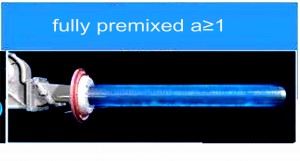- Afrikaans
- Albanian
- Amharic
- Arabic
- Armenian
- Azerbaijani
- Basque
- Belarusian
- Bengali
- Bosnian
- Bulgarian
- Catalan
- Cebuano
- China
- China (Taiwan)
- Corsican
- Croatian
- Czech
- Danish
- Dutch
- English
- Esperanto
- Estonian
- Finnish
- French
- Frisian
- Galician
- Georgian
- German
- Greek
- Gujarati
- Haitian Creole
- hausa
- hawaiian
- Hebrew
- Hindi
- Miao
- Hungarian
- Icelandic
- igbo
- Indonesian
- irish
- Italian
- Japanese
- Javanese
- Kannada
- kazakh
- Khmer
- Rwandese
- Korean
- Kurdish
- Kyrgyz
- Lao
- Latin
- Latvian
- Lithuanian
- Luxembourgish
- Macedonian
- Malgashi
- Malay
- Malayalam
- Maltese
- Maori
- Marathi
- Mongolian
- Myanmar
- Nepali
- Norwegian
- Norwegian
- Occitan
- Pashto
- Persian
- Polish
- Portuguese
- Punjabi
- Romanian
- Russian
- Samoan
- Scottish Gaelic
- Serbian
- Sesotho
- Shona
- Sindhi
- Sinhala
- Slovak
- Slovenian
- Somali
- Spanish
- Sundanese
- Swahili
- Swedish
- Tagalog
- Tajik
- Tamil
- Tatar
- Telugu
- Thai
- Turkish
- Turkmen
- Ukrainian
- Urdu
- Uighur
- Uzbek
- Vietnamese
- Welsh
- Bantu
- Yiddish
- Yoruba
- Zulu
Eyl . 19, 2024 16:31 Back to list
shell and tube heat exchanger cooling water
Shell and Tube Heat Exchanger for Cooling Water An In-Depth Overview
A shell and tube heat exchanger is one of the most commonly used types of heat exchangers in various industrial applications, particularly for cooling water systems. This equipment is designed to efficiently transfer heat between two fluids, typically the hot process fluid and the cooling water, ensuring optimal performance in a myriad of processes such as power generation, chemical processing, and HVAC systems.
Construction and Components
The shell and tube heat exchanger consists of a series of tubes, with one set of tubes contained within a larger outer shell. The process fluid flows through the tubes, while the cooling water circulates in the shell space, allowing for effective heat transfer. Each heat exchanger has multiple design aspects, including the arrangement of tubes, the presence of baffles, and the materials used in construction. The choice of materials is crucial - stainless steel, copper, and carbon steel are common due to their resistance to corrosion and ability to withstand high temperatures and pressures.
Operational Principles
The operational principle of a shell and tube heat exchanger is based on the conduction of heat and the flow of fluids. As the hot fluid flows through the tubes, it transfers its heat to the surrounding cooling water in the shell, which is usually at a lower temperature. This process continues until the desired temperature reduction of the hot fluid is achieved. The design typically ensures that the two fluids do not mix, maintaining the integrity of both systems.
shell and tube heat exchanger cooling water

The counterflow arrangement, where the two fluids flow in opposite directions, maximizes the temperature differential and enhances heat transfer efficiency. This configuration can achieve higher heat transfer rates with a more compact design compared to parallel flow or crossflow arrangements.
Advantages of Shell and Tube Heat Exchangers
One of the primary advantages of shell and tube heat exchangers is their versatility. They can accommodate various temperatures and pressures, making them suitable for a wide range of applications. Additionally, they are relatively easy to clean and maintain, which is particularly important in industries where fouling or scaling could impede performance. The modular design also allows for scalability, enabling operators to customize the heat exchanger to meet specific cooling requirements.
Another significant benefit is their ability to handle large flow rates, making them ideal for cooling water applications in power plants, refineries, and manufacturing processes. The robustness of their design ensures longevity and reliability, reducing the need for frequent replacements.
Conclusion
In summary, shell and tube heat exchangers play a crucial role in cooling water systems across various industries. Their efficient heat transfer capabilities, coupled with their durability and ease of maintenance, make them an essential choice for ensuring optimal operational efficiency. As industries continue to evolve, the demand for effective heat exchange solutions will likely grow, positioning shell and tube heat exchangers as key components in maintaining energy efficiency and process effectiveness. The ongoing advancements in heat exchanger technology promise to enhance their performance further, ensuring they remain indispensable in modern industrial applications.
-
Silica Sol Casting Supplier – Custom, ODM & Buy Services High Precision Casting Solutions
NewsJun.10,2025
-
High-Performance AODD Pumps for Diverse Applications Buy Custom & ODM AODD Solutions Online
NewsJun.10,2025
-
High-Quality Casting Machinery Parts Custom & ODM Services Available
NewsJun.10,2025
-
Premium Punching Cement Concrete Pipe Mold Pallets Custom ODM Available
NewsJun.10,2025
-
Premium Cast Aluminum Silicon Radiator Castings For Sale
NewsJun.10,2025
-
Custom Cast Steel Pipe Mold Pallet for Durable Precision
NewsJun.10,2025


